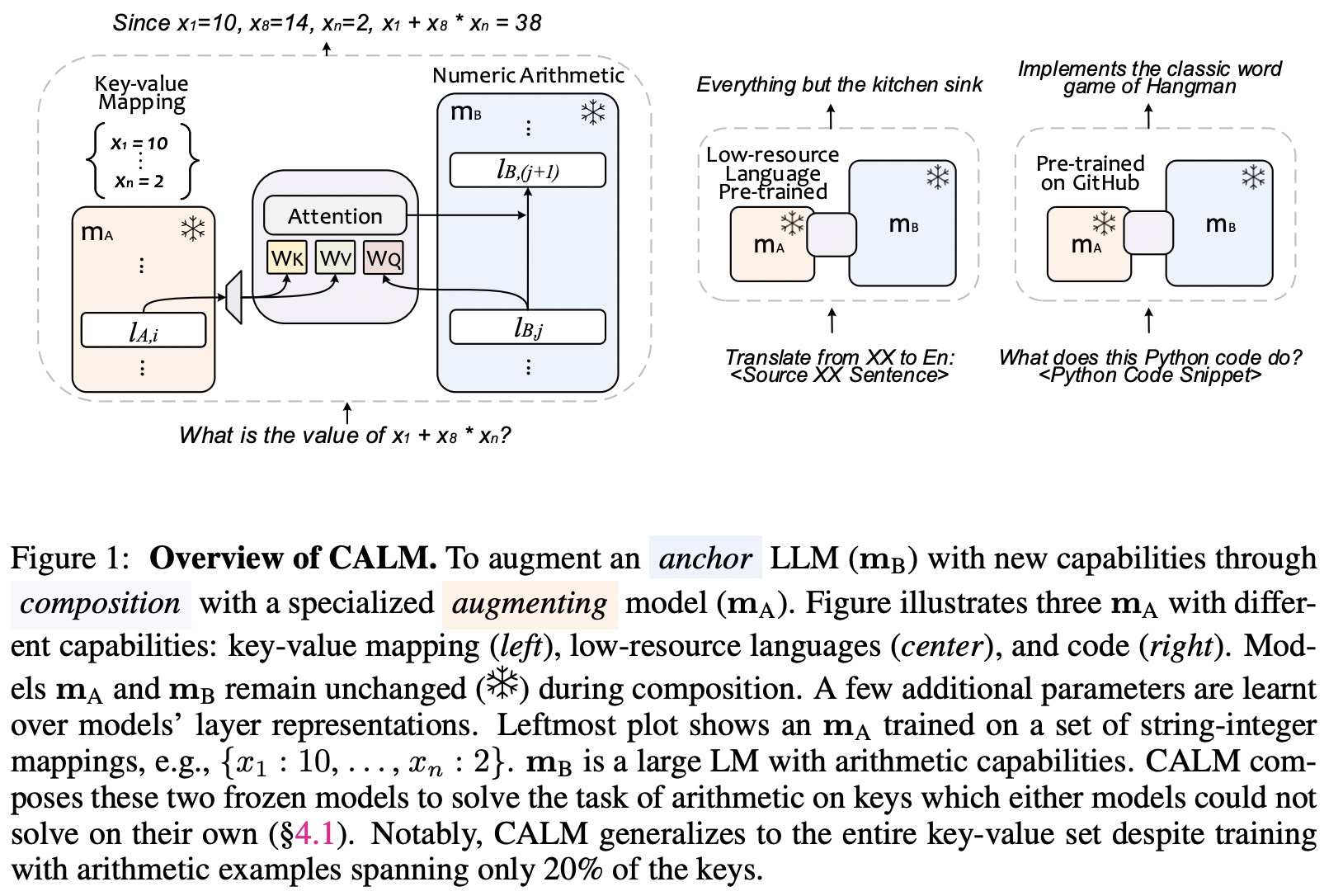LLM Augmented LLMs: Expanding Capabilities through Composition
Foundational models with billions of parameters which have been trained on large corpora of data have demonstrated non-trivial skills in a variety of domains. However, due to their monolithic structure, it is challenging and expensive to augment them or impart new skills. On the other hand, due to their adaptation abilities, several new instances of these models are being trained towards new domains and tasks. In this work, we study the problem of efficient and practical composition of existing foundation models with more specific models to enable newer capabilities. To this end, we propose CALM -- Composition to Augment Language Models -- which introduces cross-attention between models to compose their representations and enable new capabilities. Salient features of CALM are: (i) Scales up LLMs on new tasks by 're-using' existing LLMs along with a few additional parameters and data, (ii) Existing model weights are kept intact, and hence preserves existing capabilities, and (iii) Applies to diverse domains and settings. We illustrate that augmenting PaLM2-S with a smaller model trained on low-resource languages results in an absolute improvement of up to 13\% on tasks like translation into English and arithmetic reasoning for low-resource languages. Similarly, when PaLM2-S is augmented with a code-specific model, we see a relative improvement of 40\% over the base model for code generation and explanation tasks -- on-par with fully fine-tuned counterparts.
PDF Abstract



 GSM8K
GSM8K
 HumanEval
HumanEval
 CodeXGLUE
CodeXGLUE
 FLoRes-200
FLoRes-200